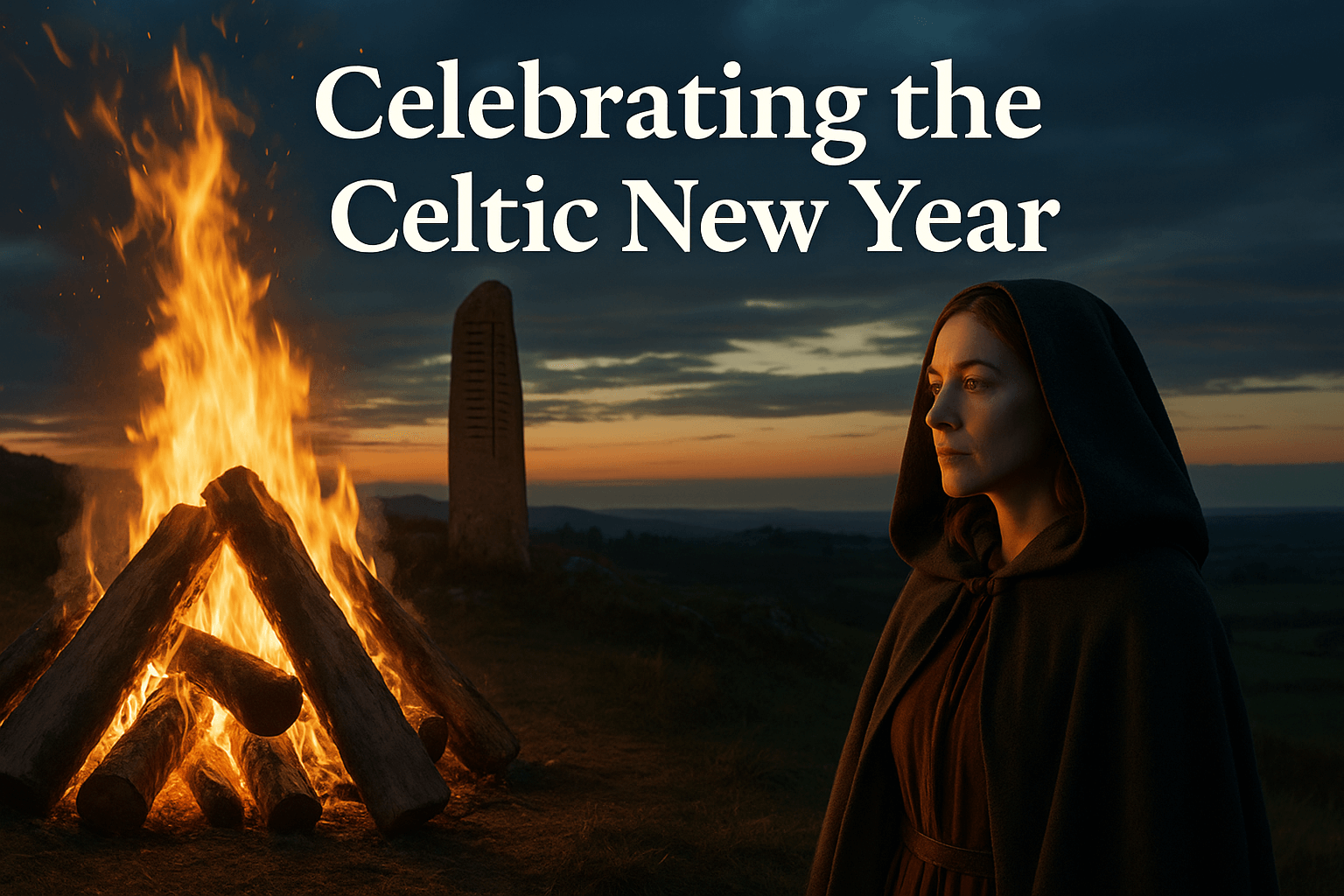The Celtic New Year is a celebration steeped in tradition, folklore, and seasonal change. It marks not just the end of one year and the beginning of another, but a time when the veil between the worlds of the living and the dead was believed to be at its thinnest. For the ancient Celts, this turning point was observed through Samhain (pronounced “sow-in”), a festival of great spiritual and cultural importance. In this article, we’ll explore the origins and customs of the Celtic New Year, how it ties into Irish language and tradition, and how you can celebrate it in a meaningful way today.
Historical and Cultural Background
Samhain, and the Celtic New Year it ushers in, predates Christianity and finds its roots in the early Gaelic calendar. This turning of the seasons—usually celebrated from October 31st to November 1st—was not just agricultural but deeply symbolic.
The Irish language played a key role in preserving these customs. Many ancient festivals, rituals, and oral traditions were recorded in Old and Middle Irish, giving us a window into the spiritual life of our ancestors. Irish revolutionaries and cultural revivalists in the 19th and 20th centuries helped to protect and restore these traditions by promoting Gaeilge (Irish Gaelic) as a cornerstone of national identity.
Samhain: The Heart of the Celtic New Year
Samhain was more than just a harvest festival. It was a time to honor the ancestors, commune with the spirit world, and prepare for the darkness of winter. Bonfires were lit to ward off evil spirits, and offerings were made to deities and the aos sí (fairy folk). People would leave food outside their homes for wandering souls and wear disguises to blend in with the spirits.
The symbolism is powerful: just as the crops die and the days shorten, so too does the world descend into a time of reflection and rebirth. It is a festival of both endings and beginnings—perfectly aligning with the Celtic concept of a new year.
Language and Celebration: Gaelic Expressions for the New Year
Saying “Happy New Year” in Irish Gaelic is Athbhliain faoi mhaise duit! (pronounced: “ah-vleen fwee vosh-ah ditch”). During the Celtic New Year, greetings and blessings would reflect the hope for prosperity, protection, and renewal.
Other useful phrases:
- Sláinte! (Health!)
- Go néirí an t-adh leat! (May luck be with you!)
- Fáilte roimh an Athbhliain! (Welcome the New Year!)
For those wanting to learn how to pronounce these properly or integrate them into conversation, Gaeilgeoir AI offers tools like Irish pronunciation guides and basic conversation lessons.
Traditional Customs and Symbols Associated with the Celtic New Year
Key symbols and practices include:
- Ogham script: This early medieval alphabet was often inscribed on standing stones and trees. Some Samhain rituals used Ogham to write blessings or divinations.
- Seanfhocail (proverbs): These traditional sayings encapsulate deep wisdom. A relevant one for Samhain: “Ní neart go cur le chéile” (There is no strength without unity).
- Seasonal foods: Apples, nuts, and root vegetables were used in feasts and games of divination.
Learning the deeper meanings behind these symbols is a great way to engage with Irish culture. Check out our guide to Irish sayings in Gaelic for more insights.
Modern Celebrations and Revivals
Today, Samhain and the Celtic New Year are celebrated by communities across Ireland and beyond. These celebrations include:
- Reenactments of traditional rituals.
- Community bonfires.
- Irish music and storytelling nights.
- Language workshops and cultural festivals.
Modern learners often turn to tools like online Irish courses or find a tutor to enrich their experience through language.
The Celtic New Year’s Influence on Language Learning
The Celtic New Year inspires many to reconnect with the Irish language as a way to reclaim heritage. Interest in festivals like Samhain sparks curiosity in traditional vocabulary, phrases, and dialects. Learners may encounter regional variations in greetings or interpretations of customs.
Gaeilgeoir AI supports this journey through resources that address dialectal differences in Irish and help learners expand their vocabulary.
Integrating Celtic Traditions into Daily Life
Want to bring a bit of the Celtic New Year into your everyday routine?
- Start your day with an Irish proverb or blessing.
- Greet friends in Irish with a simple “Athbhliain faoi mhaise duit.”
- Reflect on the seasons and journal your goals at Samhain.
- Decorate with Celtic symbols or Ogham art.
These small gestures help bridge ancient wisdom with modern life.
Conclusion
Celebrating the Celtic New Year is about more than honoring the past—it’s about enriching the present and preserving culture for the future. From ancient Samhain rituals to modern language apps, every effort to engage with tradition matters. Whether you’re lighting a symbolic candle, learning a new Irish phrase, or diving deeper into history, you’re helping keep the spirit of the Celtic New Year alive.
To continue your journey into Irish culture and language, sign up for a free trial with Gaeilgeoir AI and join a global community passionate about Ireland’s living heritage.


